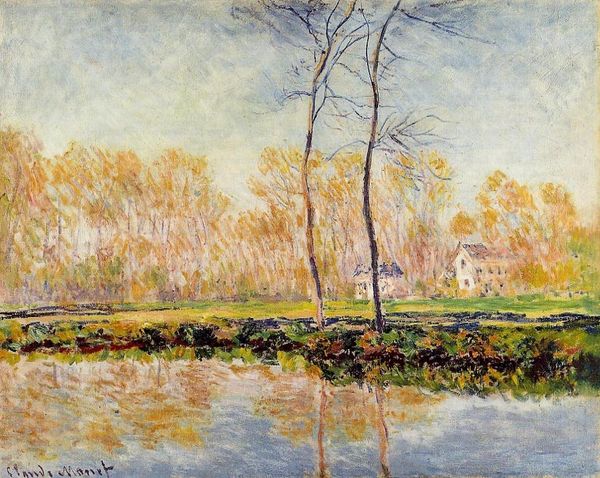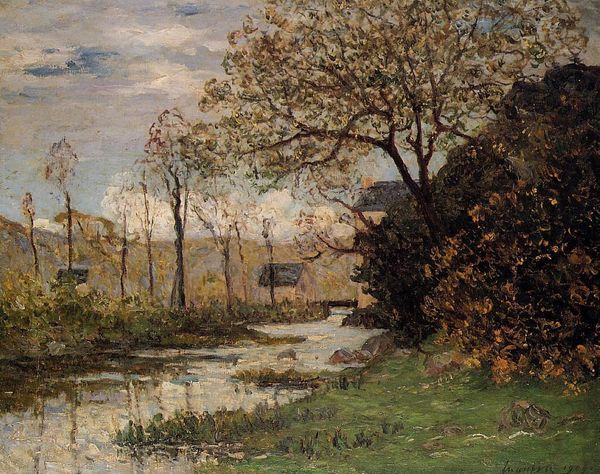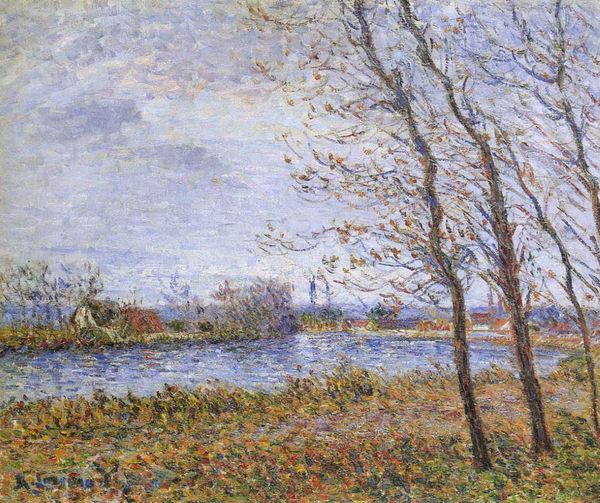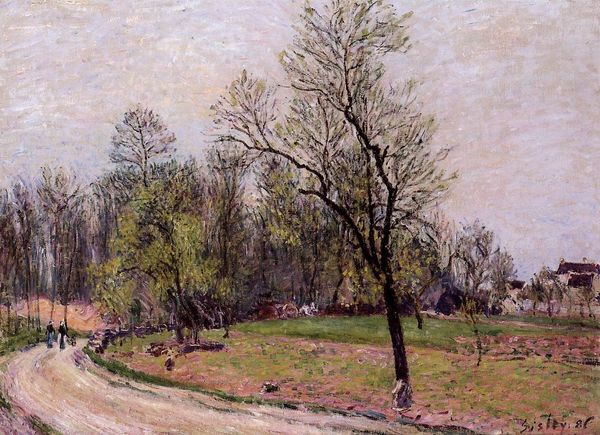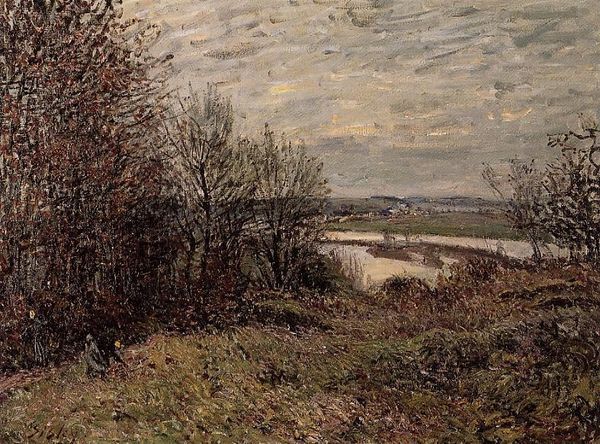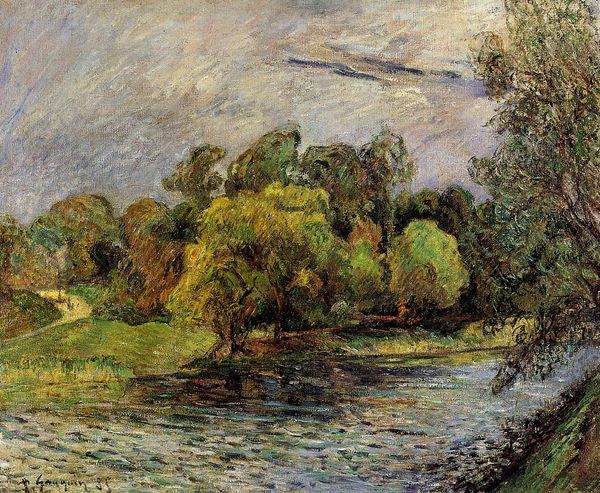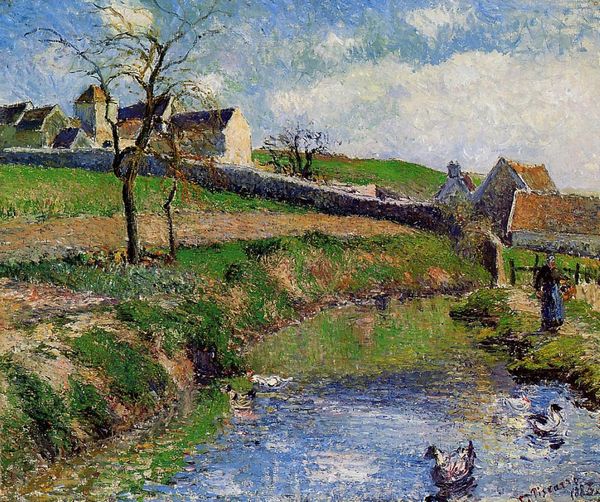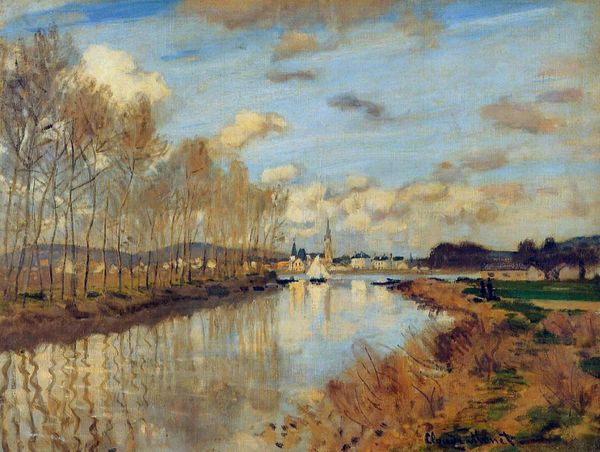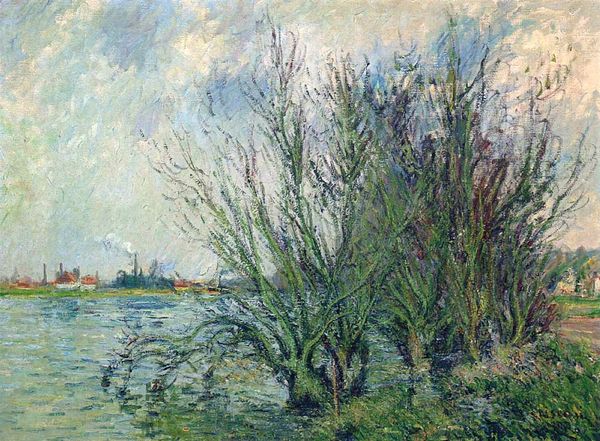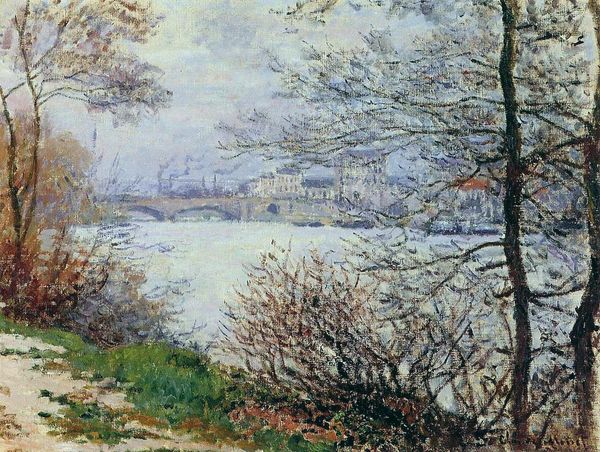
Copyright: Public domain
Curator: Looking at this canvas, I immediately think of a quiet afternoon. It has this grey, muted tone that evokes a very subtle somberness. Editor: Indeed. Here we have Camille Pissarro’s "The Climbing Path, l'Hermitage," an oil painting from 1878, now residing at the Musée d'Orsay in Paris. The bare trees give the scene a late-autumn feel. Curator: Exactly, bare and reaching—almost clawing—at the sky, as if in supplication. What do you make of that building in the center, partly obscured by the branches? There is an almost church-like structure. Editor: Interesting. The prominence of the building amidst the landscape does indeed draw the eye. Consider that in 1878, French society was still reeling from the Franco-Prussian War and the Paris Commune. The inclusion of that symbolic building suggests an almost melancholic stability amidst a transforming landscape, one tethered to institutional frameworks that had both failed and endured the rapid socio-political shifts during the Reconstruction period. Curator: So you're seeing a commentary on stability, perhaps even resilience, visualized through that central structure? I had seen it more simply as a symbol of rootedness, perhaps to contrast the more fleeting imagery around it? The wispy smoke coming from a chimney; the water in the river which represents the idea of constant change and evolution. The branches which form almost portal-like openings. Editor: Perhaps, but it’s fascinating how Pissarro uses the symbols to mirror this dichotomy: progress versus tradition, impermanence versus establishment. Curator: It also strikes me how even within Impressionism, Pissarro maintains a thread of social realism. There’s a worker gathering wood on the right. Ordinary labor depicted alongside a refined, almost romantic landscape. Editor: He certainly captures that. It pulls the artwork out of pure aesthetics and grounds it in the reality of everyday life. This juxtaposition highlights the societal structures that underpin our romantic visions of the world. Curator: Looking closer, what I appreciate is the ability of symbolism in art to elicit new meanings and thoughts across different ages, and the work is in itself an expression of those thoughts. Editor: Precisely. Pissarro invites us to consider those connections by revealing the symbolic weight each generation gives those timeless images, even in what seems a fleeting glimpse of a landscape.
Comments
No comments
Be the first to comment and join the conversation on the ultimate creative platform.
